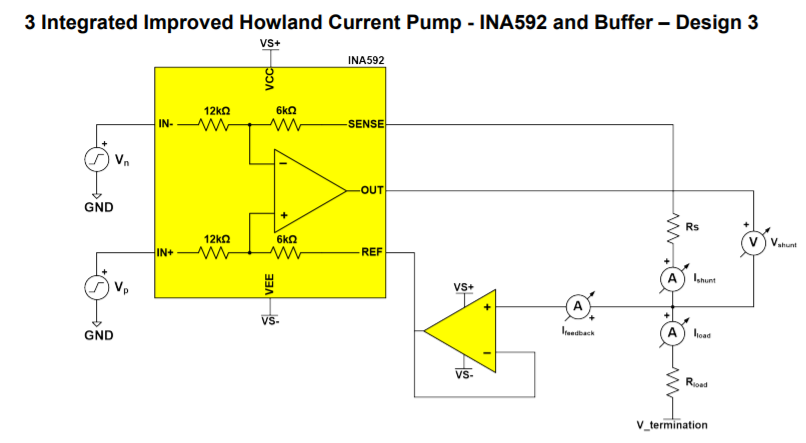Litt seems to be a tad inconsistent as to what an "improved" Howland pump is; is it just the one with the current sense resistor, that reaquires compensating the PFB resistor for the current sense resistor, or is it the version with the voltage follower, that uses equal values for teh PFB and NFB paths? My inpression was the latter...JohnRoberts said:I'm sure I have shared this before but back last century I used the improved howland current pump,
I discovered it in RTS intercoms, where it constituted the basis of their party-line system, allowing many beltpacks to be connected on a single line.that I first saw in a national applications manual back in the 70s
Actually, the absolute value of the resistors is not as important as their matching. In fact, with 1k resistors it is still possible to achieve a dynamic impedance of about 200k. There may be other consequences, though.but with impractical values for audio use (they used 1M resistors trying to get highest possible output impedance).
Would that be Gary Hebert? I spoke to both him and Les Tyler about this.For today's TMI, early this century I discussed with a senior engineer at THAT corp
*
It's the culmination of the PCB concept. "Printed" circuit boards are actually etched; metallization is a real positive print.** ICs are fabricated with subcomponents that get connected together by the final metallization layer, kind of like how traces on a PCB connect discrete components together... ICs are like an upside down PCB but without the board.


































![Soldering Iron Kit, 120W LED Digital Advanced Solder Iron Soldering Gun kit, 110V Welding Tools, Smart Temperature Control [356℉-932℉], Extra 5pcs Tips, Auto Sleep, Temp Calibration, Orange](https://m.media-amazon.com/images/I/51sFKu9SdeL._SL500_.jpg)



